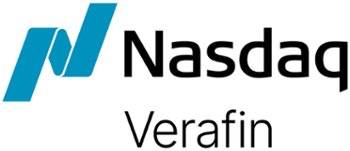Preventing Fraud Losses in the New Era of Faster Payments
Nasdaq Verafin

Driven by the desire for quicker, frictionless payments, the U.S. financial industry is experiencing a faster payments revolution. The constant, 24/7 payment capabilities of services like The Clearing House’s real-time payments platform (TCH-RTP®) and the Federal Reserve’s FedNow Service have led to these channels experiencing significant growth, with TCH-RTP® achieving a $1 billion day in June 2024 and FedNow Service now in use across all 50 states by over 1,000 financial institutions.
Unlike most payment rails in the United States, faster payments use a push payment system where the payer directly initiates the transaction and controls the amount and destination of the funds. This creates vulnerabilities for Authorized Push Payment (APP) fraud, such as romance scams and Business Email Compromise (BEC), where victims are deceived into sending payments to accounts under criminal control. These scams can result in significant losses. Globally, over $6.7 billion was lost to BEC in 2023, with 51% occurring in North and South America.
Faster payments are irrevocable — they cannot be canceled or recalled and some settle instantly. There is an extremely narrow window for detection and interdiction before fraudsters receive, and can immediately withdraw, massive amounts of funds. With the recent announcement by The Clearing House that individual transaction limits over the RTP® Network will be raised to $10 million in 2025, faster payments may only become more appealing to criminals.
Preventing Losses from Faster Payments Scams with a Consortium Approach
This era of faster payments brings great opportunity, but also significant risk. Consortium approaches are the key to helping institutions stay ahead of evolving faster payments risk. Cloud-based consortium data enables institutions to identify patterns of criminal activity, evolving trends, and financial crime risks more effectively across multiple institutions, without sharing Personally Identifiable Information (PII).
A fraud investigator’s time is valuable. Consortium evidence provides greater context to transactions, allowing them to focus on higher-risk suspicious alerts. With greater insight, investigators can prevent more fraud, and interdict earlier to minimize losses.
Nasdaq Verafin’s consortium approach to payments fraud prevention leverages over 650 million counterparties to consider the complete picture of risk across the entirety of a faster payment. Payments from accounts with a history of legitimate activity across the consortium are analyzed as lower risk, while payments involving new or unrecognized accounts are analyzed as higher risk. With this robust insight, your institution can reduce customer friction by allowing legitimate transfers to proceed uninterrupted, while also using real-time analysis to stop suspicious payments and immediately prevent loss.
For more information on a consortium approach to combating payments fraud, read Nasdaq Verafin’s whitepaper, Payments Fraud: Collaborating to Combat an Industry Challenge.